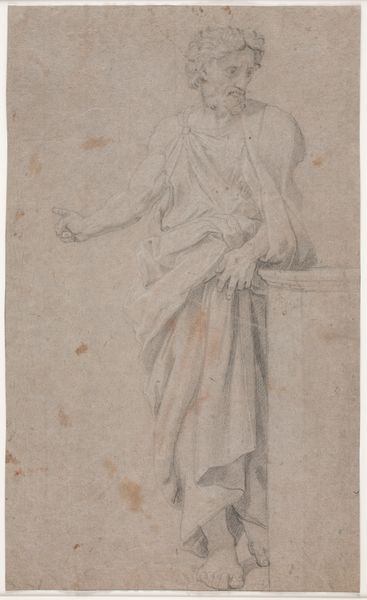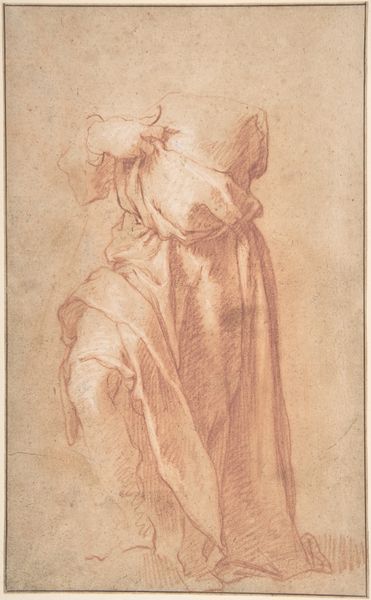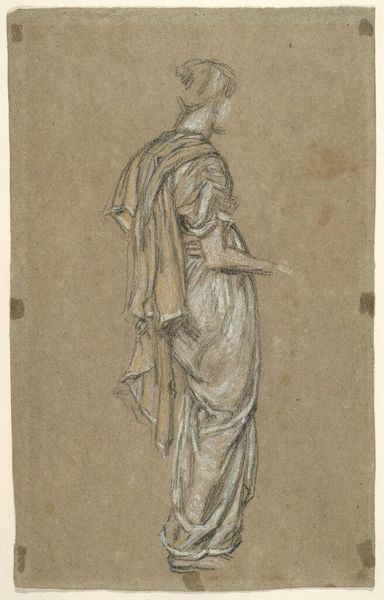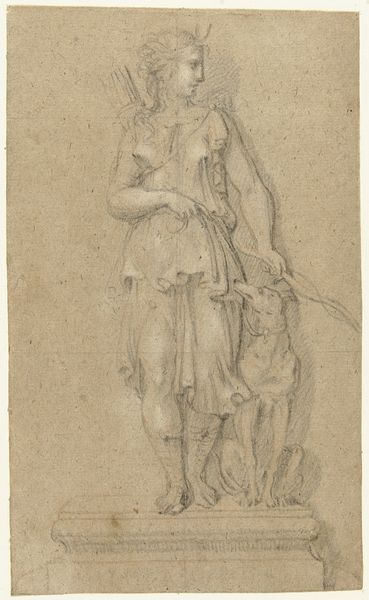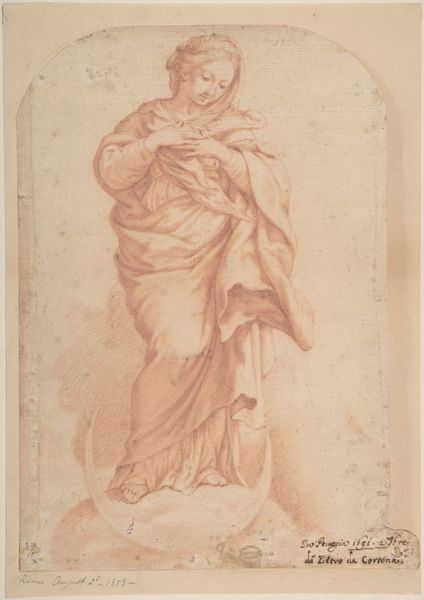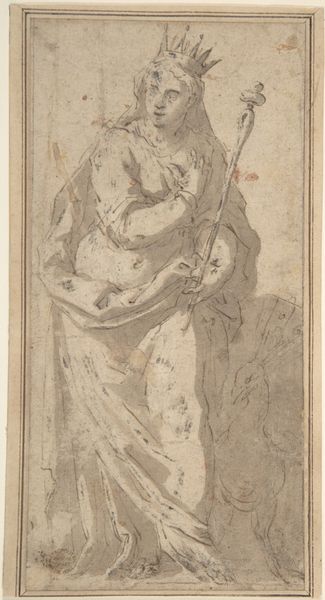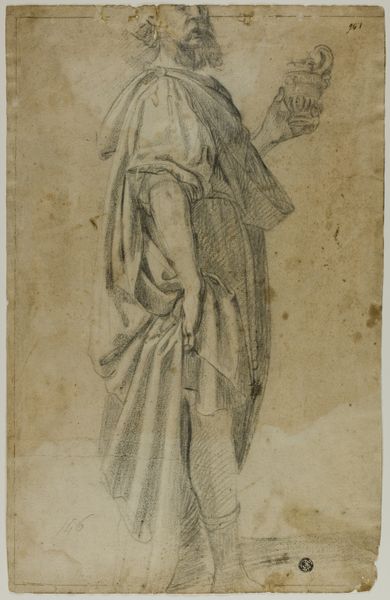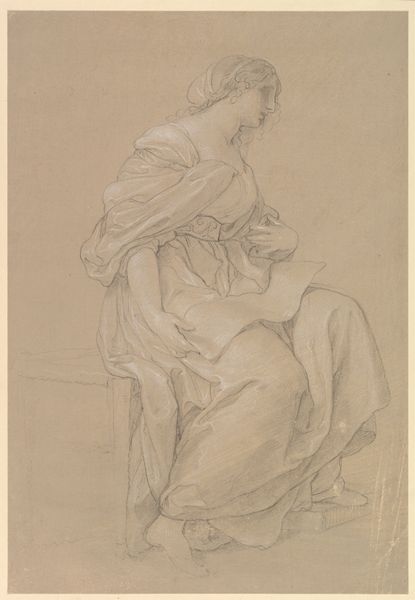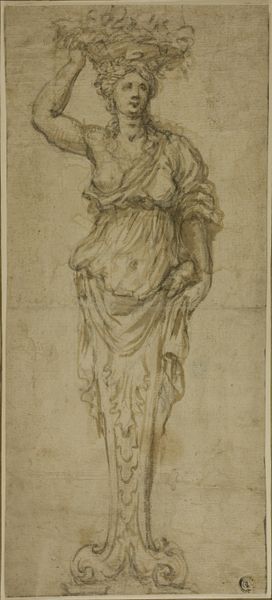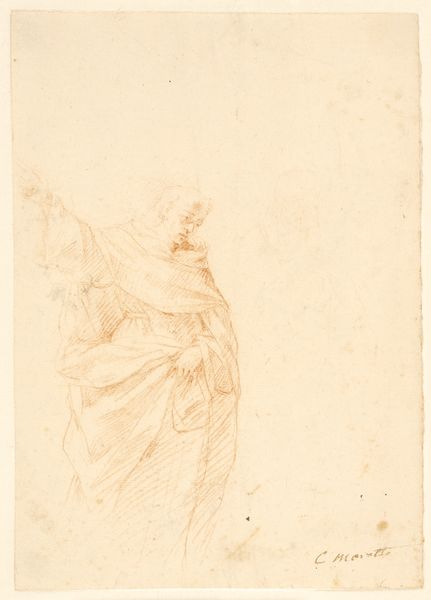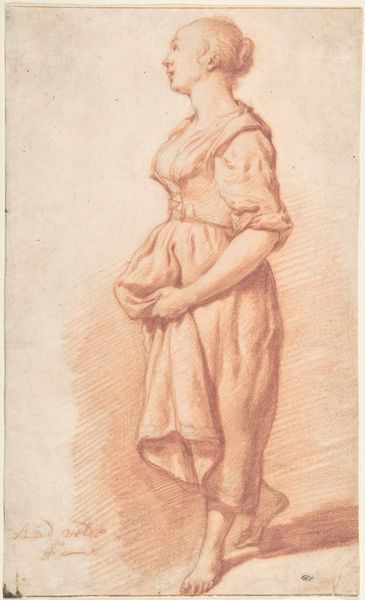
drawing, print, paper, charcoal
#
portrait
#
drawing
#
baroque
# print
#
charcoal drawing
#
paper
#
charcoal art
#
oil painting
#
charcoal
#
history-painting
#
academic-art
Dimensions: 16 7/8 x 10 5/16 in. (42.9 x 26.2 cm)
Copyright: Public Domain
Curator: Standing before us is "Study for Saint Gervasius," a work by Eustache Le Sueur, created between 1647 and 1657. It's currently housed at the Metropolitan Museum of Art. The artwork is primarily charcoal on paper, rendered in a delicate drawing. Editor: My immediate impression is of quiet dignity. There’s something subdued and almost sorrowful about the figure, caught in mid-stride. The monochrome adds to that sense of contemplative stillness. Curator: Indeed. Consider the labor involved in producing charcoal, a common yet foundational material for academic drawings during the Baroque era. The careful grinding of pigments, the prepared paper - all point to a well established workshop practice. We often overlook these manual processes, focusing instead on perceived artistic genius. Editor: That emphasis on production is crucial, but I see beyond that. Saint Gervasius—martyred for his faith. Think of the social and religious turmoil of 17th-century France. Le Sueur captures a man embodying sacrifice, his bowed head and clasped hands signifying devotion, resistance perhaps, against prevailing societal forces. Curator: Resistance, maybe, or rather an accommodation within the very powerful Catholic Church which sustained artistic production. Le Sueur likely depended on such commissions. The drape of the robe, those studied folds—they reflect artistic traditions reaching back to antiquity, passed down through rigorous academic training and reproduced within a workshop economy. Editor: But isn’t that precisely the point? These religious narratives were deliberately manufactured for specific political purposes! The flowing fabric, while aesthetically pleasing, also conveys power, and legitimizes authority. How might this image function differently depending on who sees it – a royal courtier or a peasant? Curator: Context informs production, wouldn't you say? A deeper investigation into period pigments would further enrich this picture. For example, identifying the source of the charcoal itself and the role its processing and trade played can tell us a lot. Editor: I'm looking at it as part of a wider history, a dialogue between piety, power and how such narratives impact cultural discourse and collective identities even now. Curator: I think that’s valid. The conversation highlights the complex intertwining of art, materiality, and history, all converging to enrich our understanding of Le Sueur's piece. Editor: Precisely. Ultimately, that conversation opens doors for diverse perspectives and meanings of artworks that endure for centuries, inviting continuous reassessment.
Comments
No comments
Be the first to comment and join the conversation on the ultimate creative platform.

